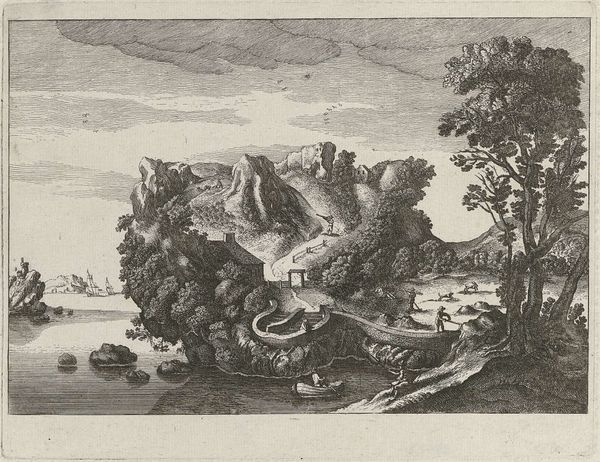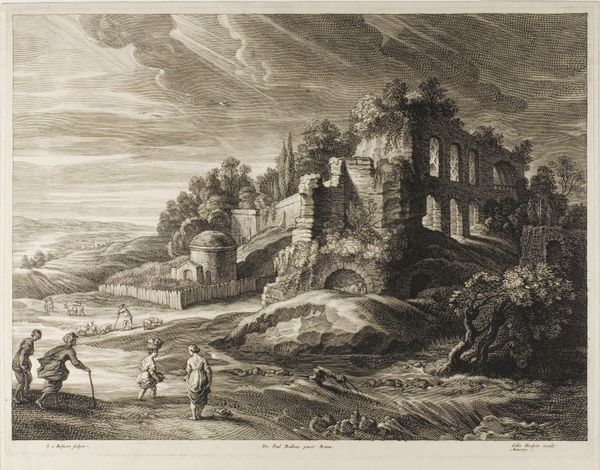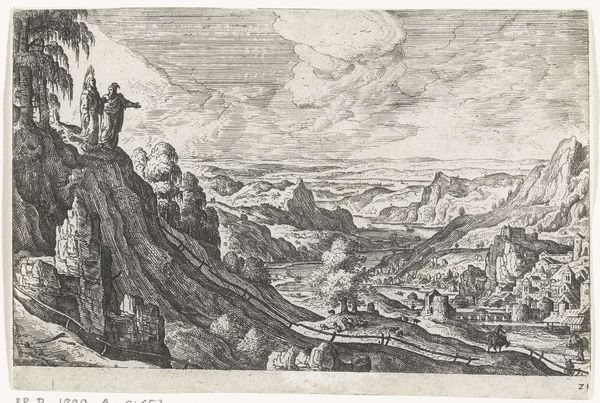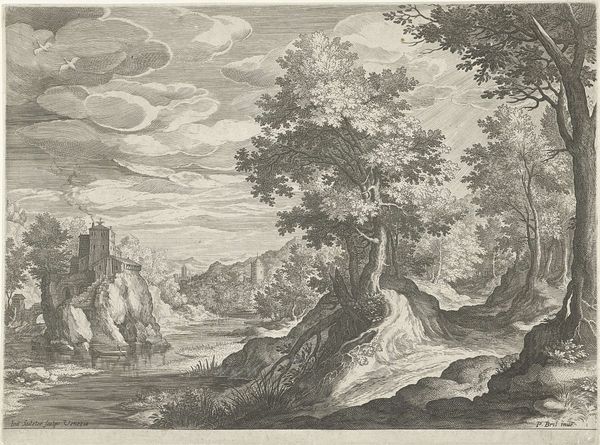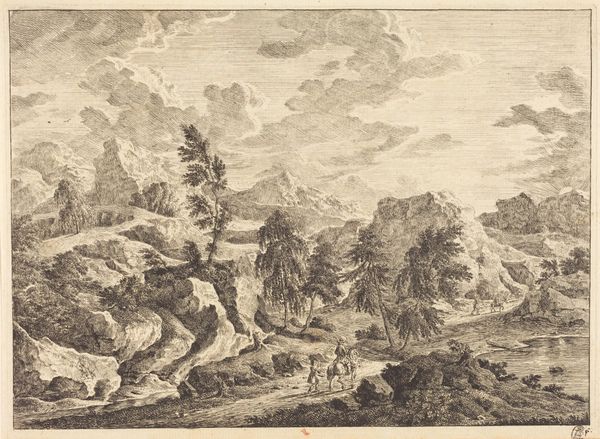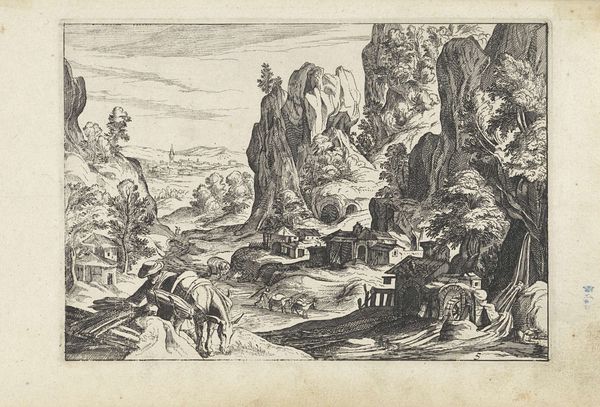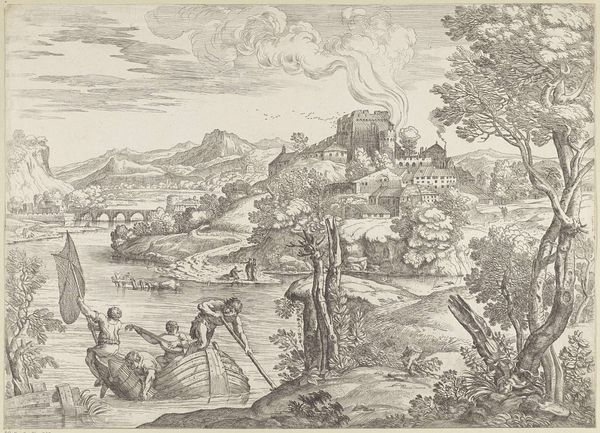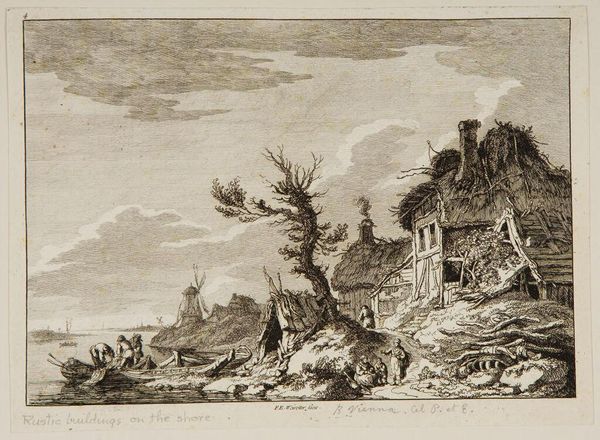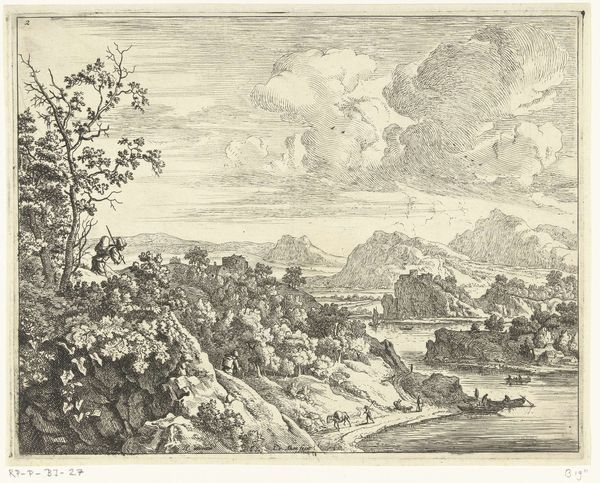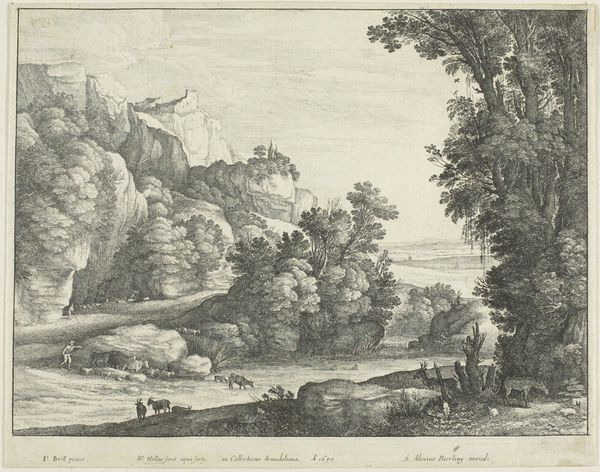
drawing, print, engraving
#
drawing
#
baroque
#
pen drawing
# print
#
landscape
#
line
#
engraving
Dimensions: height 272 mm, width 381 mm
Copyright: Rijks Museum: Open Domain
Willem van Lande’s "Italian Landscape with a View of a Ruin," made around the mid-17th century, is a meditation on the passage of time, rendered with the precision of an etching. The printmaking process is crucial here. It begins with a metal plate, likely copper, meticulously incised by the artist with fine lines to create the image. This skilled work demands a practiced hand, using tools to physically cut into the metal’s surface. Ink is then applied, filling these grooves, and the plate is pressed onto paper, transferring the design. Look closely, and you can see the texture that results from this direct, physical action. The image shows figures going about their day, amidst the ruins of great buildings and the beauty of nature. By combining a clear landscape with a reference to figures and landscape, the artist offers a glimpse into a specific place, real or imagined. This etching exemplifies how close attention to materials and making helps us understand art more fully. The skilled labor required for the print is a testament to artistic craft, inviting us to see this landscape not just as a picture, but also as a product of human effort and ingenuity.
Comments
No comments
Be the first to comment and join the conversation on the ultimate creative platform.
